The Carl Zeiss Distagon 2.8/28 has the reputation to be one of the best 28mm lenses ever made. I put it on my Sony a7 and created an extensive review.
Sample Images
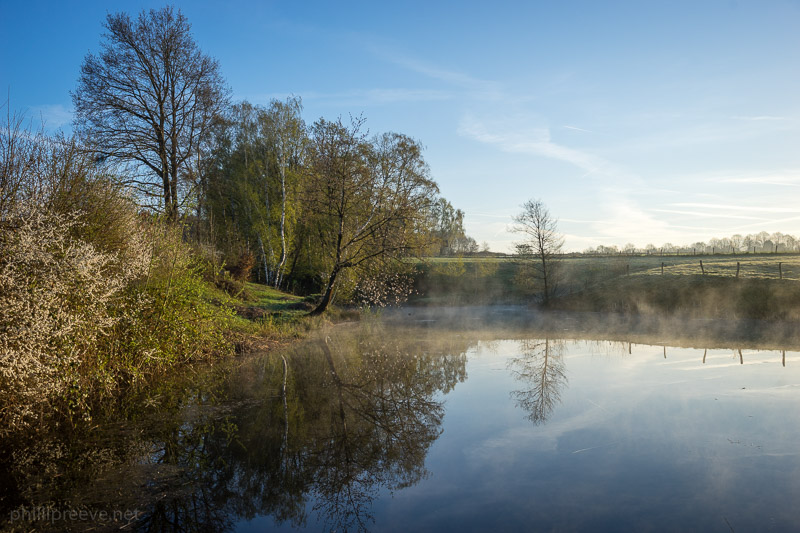
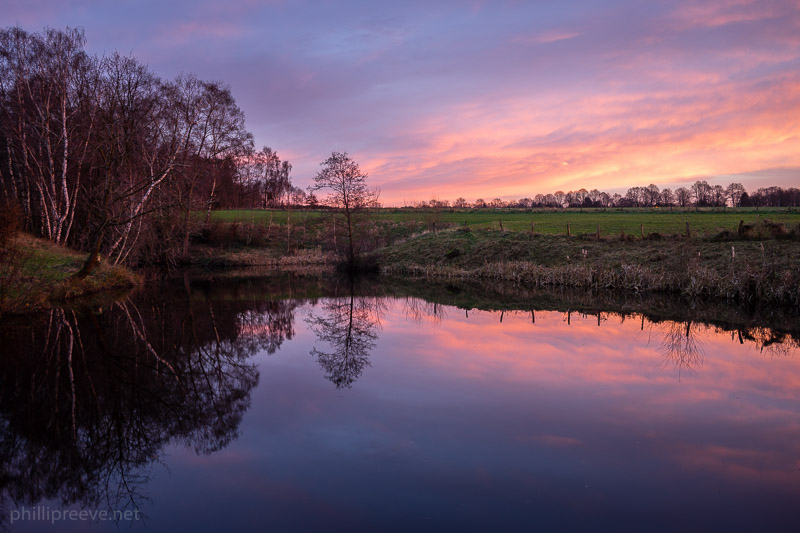
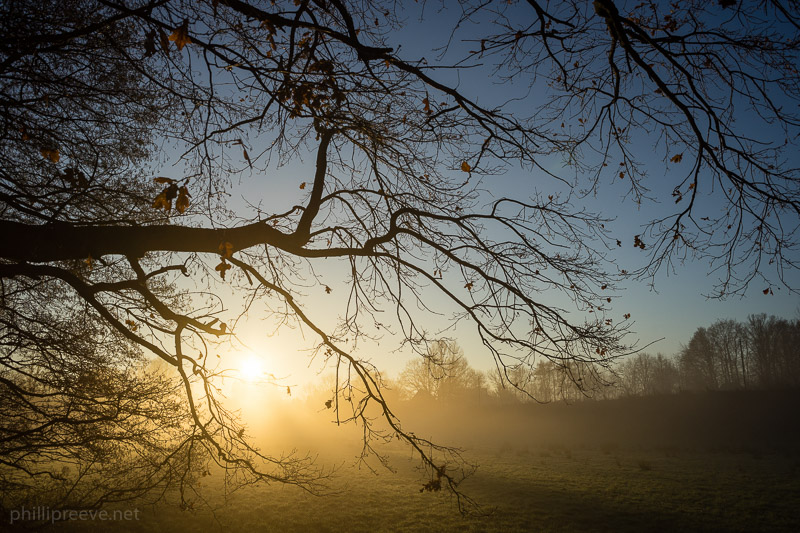
Specifications
-
- Diameter: 62.5mm
- Length: 50mm
- Weight: 280g
- Filter Diameter: 55mm
- Number of Aperture Blades: 6
- Elements/Groups: 7/7
- Close Focusing Distance: 25cm
- Mount: Zeiss C/Y
More information in Zeiss’ official data sheet.
The Carl Zeiss Distagon 2.8/28 usually sells for around $200-300 at ebay.com (affiliate link).
In Germany you can buy it for 150-250€ at ebay.de (affiliate link).
The younger MM version usually sells for a little bit more than the older AE version.
Versions
There are two versions of the Zeiss Distagon 2.8/28 T*.
The older AE version introduced in the mid 70’s won’t allow program and shutter-priority with film cameras. I think it was made in Japan from the beginning while other C/Y lenses were manufactured in Germany before production was moved to in Japan (als called AEJ). I have no definitive proof for that but a collector who looked really hard for a made in Germany copy and compiled dozens and dozens of serial numbers couldn’t find one. Unlike the later MM version the AE version has Ninja-star shaped bokeh circles stopped down. Check out my Contarex 2/50 review to see an example for that.
The younger MM version was sold from 1984 to 2005. It can be identified by the green color of the f/22 marking, see image below. It was only manufactured in Japan. If you want to leitax your lens to Nikon F-mount or Sony A-mount you need to buy the MM version.
Some people claim that the coatings and the optical design have been improved when the MM version was introduced but I couldn’t find any good source to back it up. This comparison shows a little better performance for the MM version but I think it is within the margin of error.
Credit for much of this information goes to the great guys over at the FM forum.
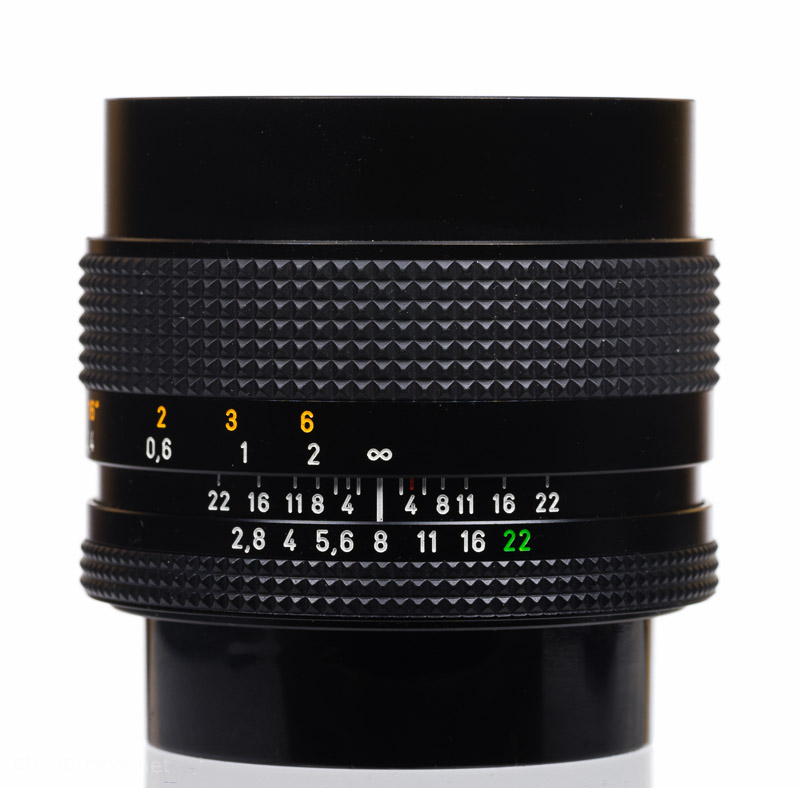
Zeiss also produced the ZM Biogon 2.8/28 which has a totally different optical design and different mount. And a C/Y 2/28 which has a different characteristic as well.
Compatibility
The Zeiss Distagon 2.8/28 can of course be used on a wide range of Contax and Yashica film cameras but I know little about those so I can’t tell you any details.
You can also buy adapters to use it on Canon EOS cameras but in some cases the mirror will hit the back of the lens. Check out this site for more information.
To use a C/Y lens on a Nikon F-mount camera you need to replace the mount of your C/Y lens. Check out Leitax for more information. I can recommend their products, they are very well made.
The easiest way to use a C/Y lens on a digital camera is to buy a mirrorless camera. I can only recommend to buy a full frame camera so the Sony Alpha 7 series cameras are your only choice (unless you have too much money and want a Leica SL). Check out this article for more information about how to use manual lenses on the Sony a7-series.
Build Quality
Build quality is superb and the lens feels very solid.
The barrel is made of metal with very low tolerances. Both focus and aperture ring are rubberized and easy to grip.
All markings are engraved
Size, Weight and Handling
The Zeiss Distagon 2.8/28 is about as large and heavy as your average 1.4/50. It is very well balanced on the Sony a7.
The focusing ring travels about 100 degrees from 0.25m to 1m and a further 20 or so degrees to infinity. I think this is a very good transmission, focusing was easy at any distance. The focusing feel is just quite nice: Very precise but not too smooth.
The aperture ring has full stops from f/2.8 to f/22 but it isn’t too hard to select half-stops. I think it is one of the nicest aperture rings I have ever used, resistance is just right and every stop very distinctive.
Honestly I wouldn’t know how to improve the handling of the Distagon 2.8/28.
Lens Hood
I don’t own a hood for the Distagon 2.8/28 but according to mir.com there were two different hoods: The Metal Lens Hood No.1 and the Soft Lens Shade 55mm G-12.
Filters
The 55mm filter thread is made from metal
The front of the lens does not rotate so polarizers are easy to use.
Image Quality
Vignetting
At f/2.8 vignetting is significant at close to 2.5 stops. At f/4 it is reduced to about 1.5 stops and by f/8 a little less than 1 stop.
Flare Resistance
The flare resistance of the Zeiss 2.8/28 is very good. There is very little contrast loss and only minor ghosting.
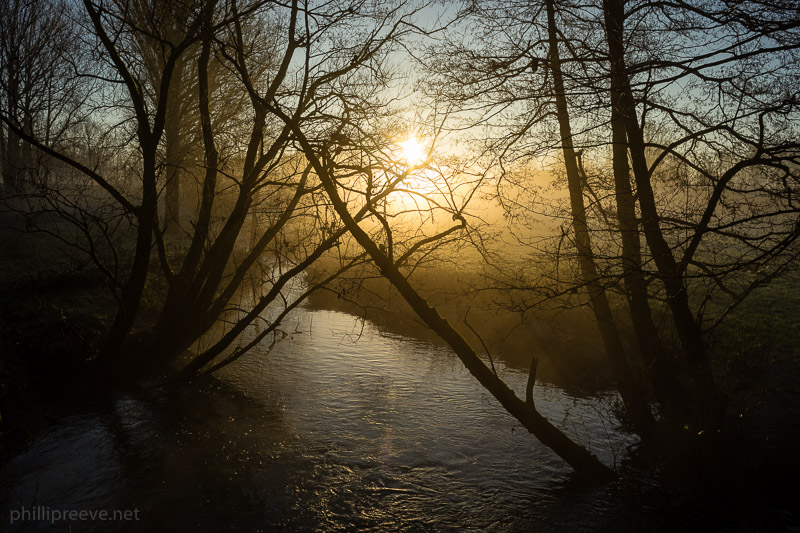
This is the very worst ghosting I could provoke and it is only visible because I pushed the shadows of this image a lot:
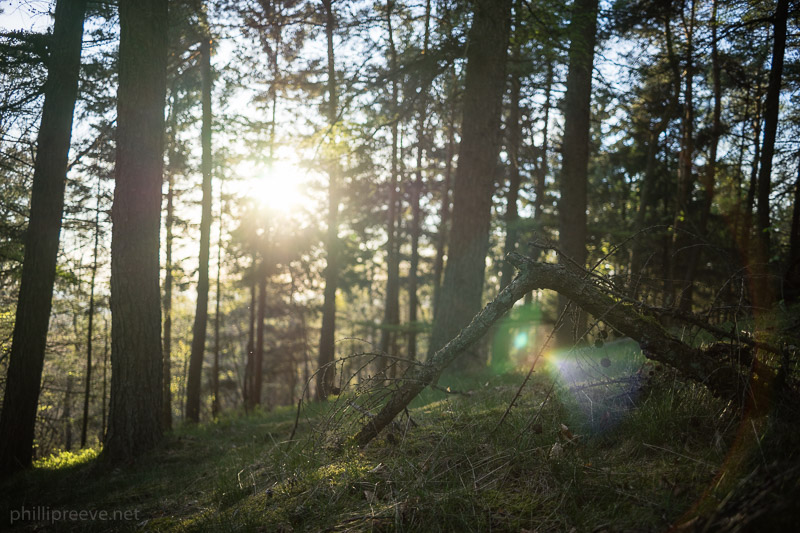
A small blob like in this image was more common. The shadows were pushed as well which makes it more obvious:
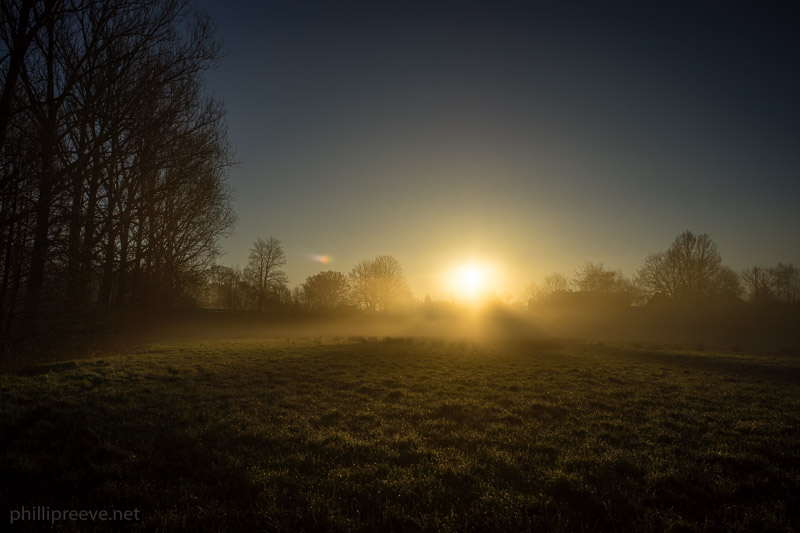
Distortion
The distagon shows a small amount of barrel distortion, a setting of +3 corrects it very well in Lightroom.
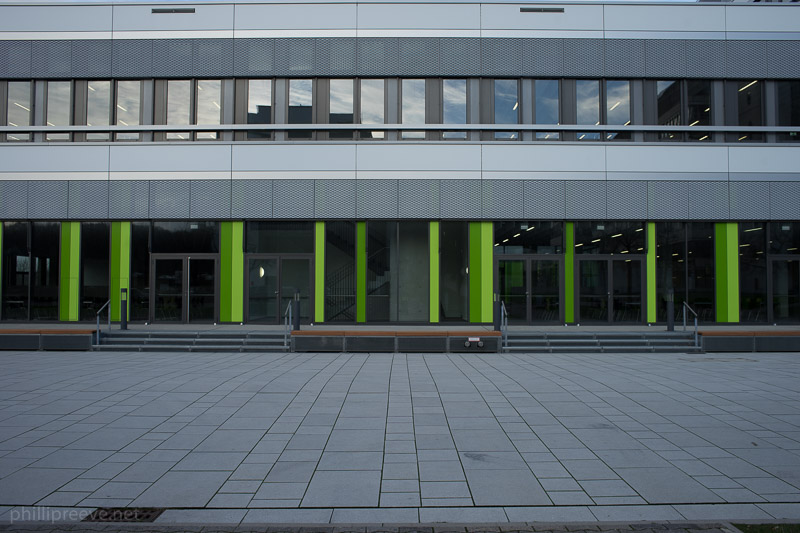
Chromatic Aberrations
Lateral CA are well corrected for a wide angle lens but certainly visible on more critical subjects so I would advise to correct them.
Bokeh
Bokeh is not a strength of the Zeiss.
Out of focus highlights a a defined edge and the transition zone is quite nervous:
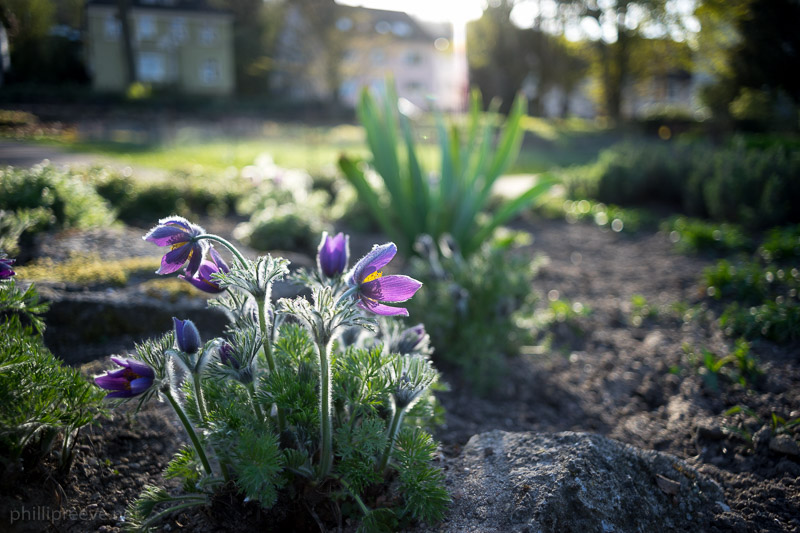
OOF highlights in front of the point of focus are much smoother:
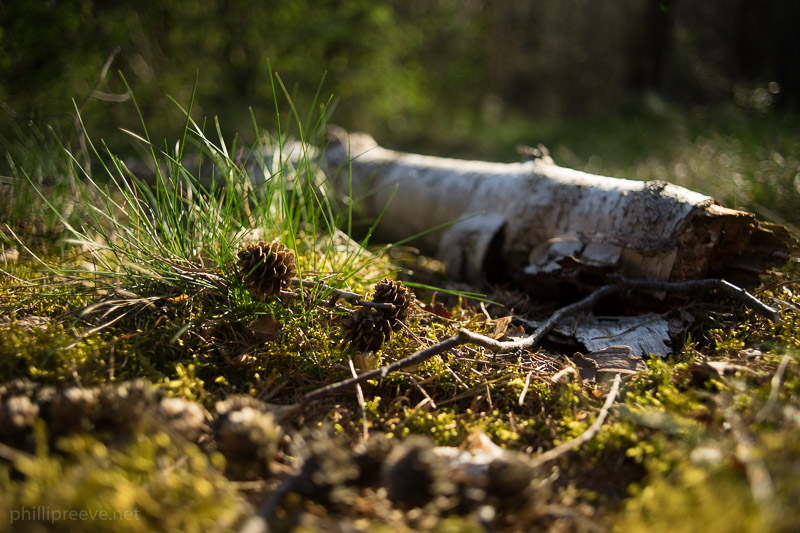
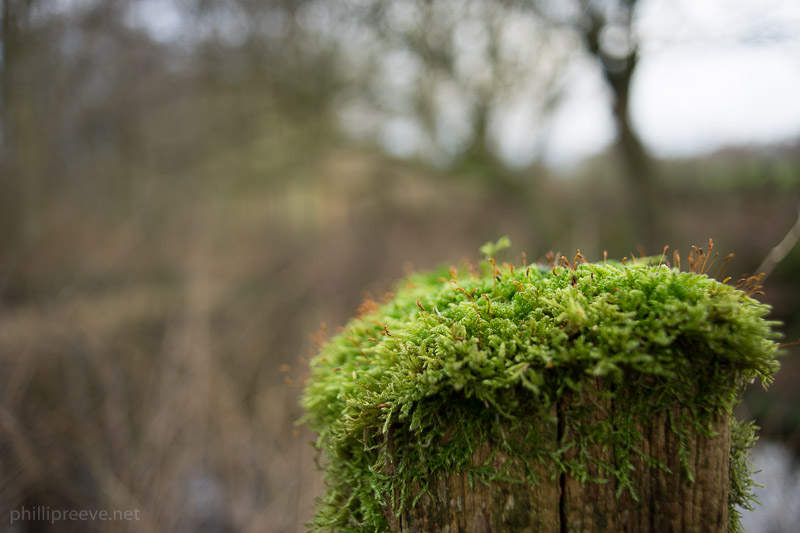
At the minimal focusing distance bokeh is quite nice but this is because the lens itself is less well corrected and quite soft.
At longer distances the lens is sharper but the bokeh quite harsh:
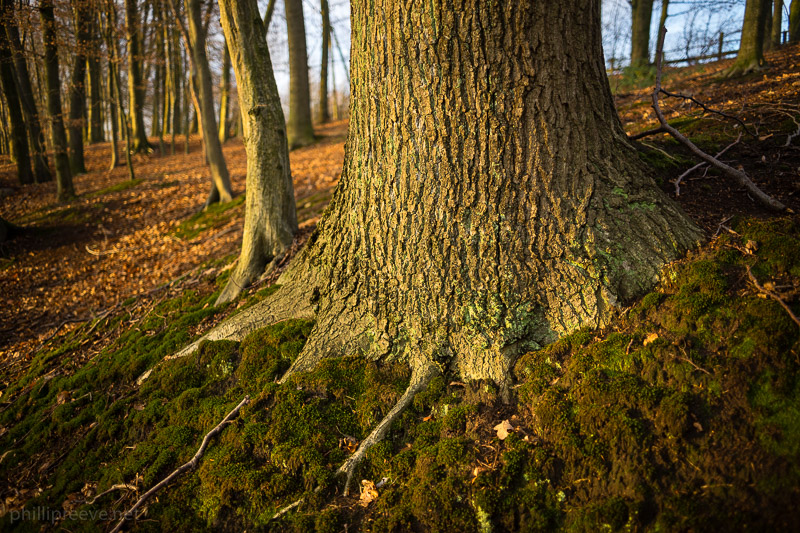
Sunstars
The Zeiss Distagon 2.8/28 only has 6 aperture blades so sunstars only have 6-pointed stars. From f/11 they are well defined and at f/16 they are very prominent.
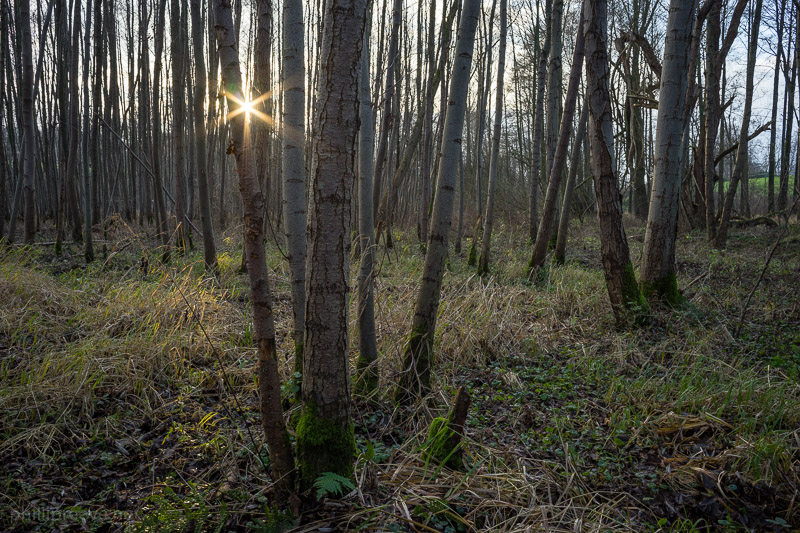
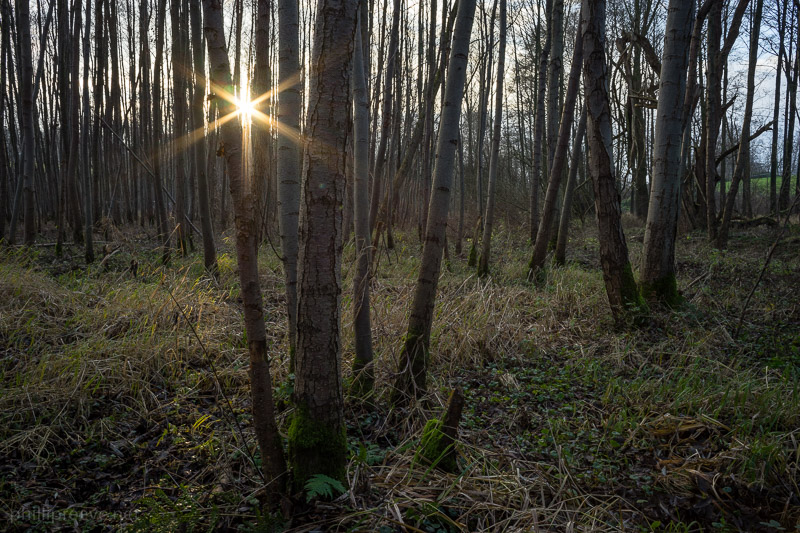
Contrast
Contrast is great from f/2.8.
I am usually very cautious with claims I can’t support with some data so take my impression with a grain of salt: To my eyes the images I took with the Zeiss 2.8/28 C/Y stood out because of their plasticity and contrast.
Sharpness
The full aperture series can be found at flickr.
f/2.8: The center is excellent, the midframe region is good but the outer half of the image circle is not very sharp.
f/4: Very little difference to f/2.8
f/5.6: The edges of the frame have much better contrast and they are a little sharper. The corners remain soft.
f/8: A significant improvement can be seen in the corners. With the exception of the extreme corners and a small dip around r=15mm it is very sharp across the frame.
f/11: The center is a little less sharp but the extreme corners improve a bit.
F/2.8 gives excellent results as long as your subject is more or less in the central half of the image and not too close. For landscapes I would recommend to stop down to f/8 . If the extreme corners are important you can stop down to f/11 and trade a little less sharpness in the center for better corners. I think this is a very good performance for a wide angle lens.
Field Curvature
The Distagon does show a significant amount of field curvature. At r=15mm the plane of focus is closest to the camera. Beyond this point it bents backwards. The extreme corners are focused significantly behind the center. If you have the Distagon 2.8/28 set to f/11 and have a flat subject at infinity even the extreme corners will be sharp but the rest of the frame will be out of focus.
Close Focus Performance
The Zeiss 2.8/28 has a close focusing distance of 25cm which results in a reproduction ratio of 1:6 which is decent for a 28mm lens.
The Distagon does not feature floating elements so performance suffers quite a bit at shorter distances. F/2.8 is downright soft, f/4 is okay and you should stop down to f/5.6 for good sharpness. For very good results I would recommend f/8 or even f/11.
Alternatives
Sony FE 2/28 – The Sony has AF, is faster and it has nicer bokeh. It is also sharper in the extreme corners at f/8 if you don’t correct the distortion, if you do the Zeiss is a little sharper across most of the frame. The FE 2/28 vignettes a lot and it has very significant distortion. It is a little smaller than the Zeiss Distagon if you include the adapter but twice as expensive. Build quality is no contest, the Zeiss wins. See this post for a comparison of both lenses.
Sony FE 4/16-35 ZA OSS – Four times as expensive, two times as heavy but more flexible because it a zoom and because it is stabilized. Distortion is more pronounced. Sharpness at f/8 is very close with an advantage for the FE Zeiss in the extreme corners.
Olympus OM 3.5/28 – A very small and very affordable lens which is only a little less sharp and contrasty than the Zeiss 2.8/28 but it has less field curvature. Build quality is not as nice as that of the Zeiss.
SMC Pentax K 3.5/28 (52mm filter thread) – Even though it usually sells for half the price of the Zeiss 2.8/28 it comes very close to it in performance. I think the Zeiss is a tad sharper but at f/8 the extreme corners of the Pentax are sharper and it has less CA. Build quality is quite good.
Nikon Ai-S 2.8/28 – I don’t own it but from what I have seen and read it is a little weaker at longer distances. The big advantage of the Nikon is that it has a very short minimal focusing distance and floating elements. So it is much more suited for short distance work.
Also check out this interesting comparison on the a7rII on FM with the Pentax 3.5/28, Olympus 3.5/28 and Nikon AI-S 2.8/28.
Conclusion
good
|
average
|
not good
|
The Zeiss Distagon 2.8/28 T* is a very enjoyable lens and well suited for landscape photography.
Few lenses are built as well and handle as nicely as the Zeiss 2.8/28. To me this is an important aspect of a lens, I don’t shoot for money I shoot because I enjoy the process and the end result.
For my landscape photography the Zeiss Distagon 2.8/28 performed very well, by f/8 it is very sharp with the exception of a few pixels in the corners. It handles most back lit situations with ease and because it it doesn’t weight me down much I often have it with me.
Of course it isn’t a perfect lens. While the center is excellent from f/2.8 you should at least stop down to f/5.6 for good corners. Vignetting is also very obvious at f/2.8 and to a lesser degree at f/4. The performance drop at shorter distances is a bit of a letdown.
The Zeiss is a bit more expensive than other manufacturer’s competing lenses but it is also a little better. Compared to today’s Sony FE lenses the price/performance ratio is awesome and you get a lot for your money.
I can recommend the Zeiss Distagon 2.8/28 T*, in fact I enjoyed shooting with it a lot and I think it is one of the very best manual 28mm lenses you can buy. If you look for a very versatile 28mm lens the FE 2/28 is a better versatile solution but I enjoyed the Zeiss 2.8/28 more because it is built so well and has a real focusing ring.
The Carl Zeiss Distagon 2.8/28 usually sells for around $200-300 at ebay.com (affiliate link).
In Germany you can buy it for 150-250€ at ebay.de (affiliate link).
If this review was helpful to you, please consider using one of my affiliate links. I will earn a small commission on your purchase and it won’t cost you anything. Thanks!
Zeiss Distagon 2.8/28 T* Sample Images
All images are processed in Lightroom from Raw. Many more full resolution samples in my Zeiss Distagon 2.8/28 flickr album.
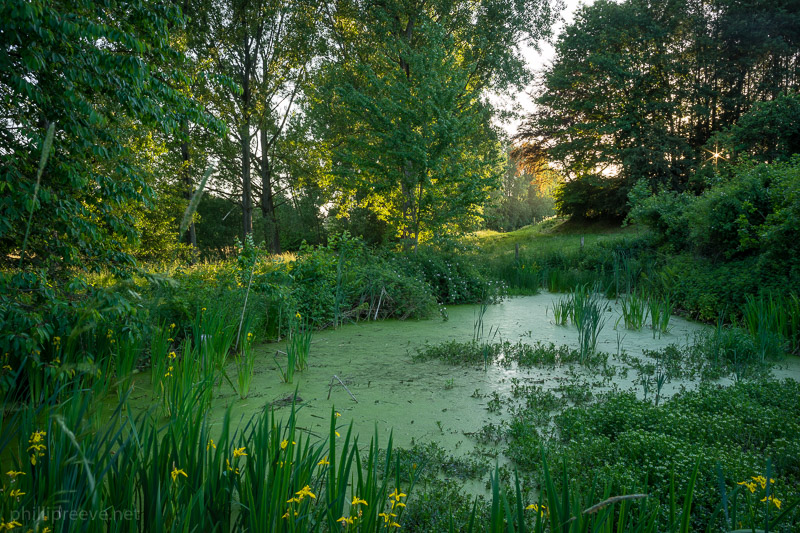
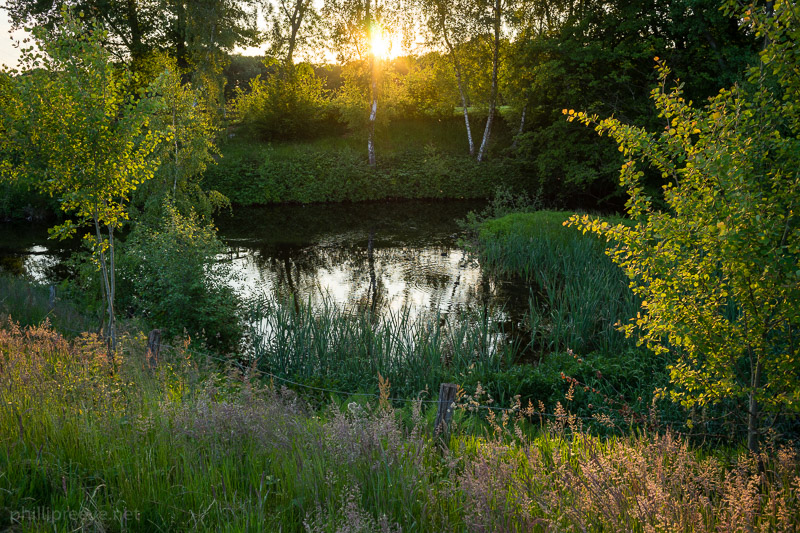
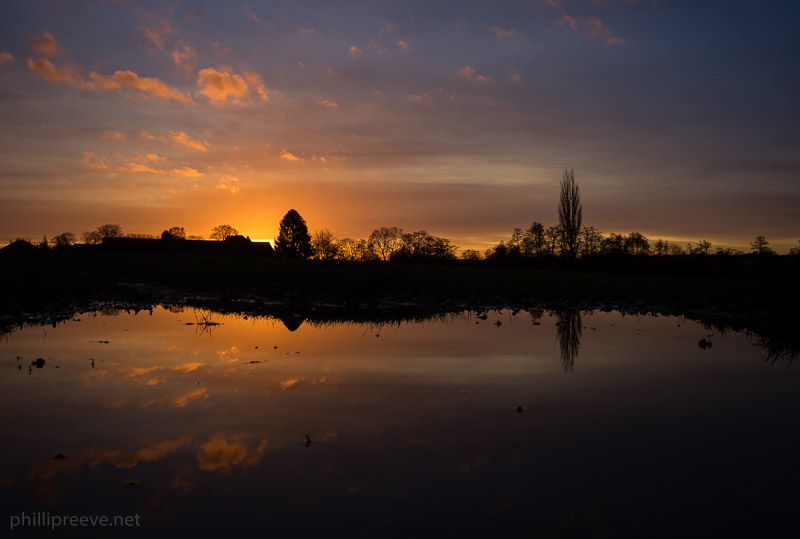
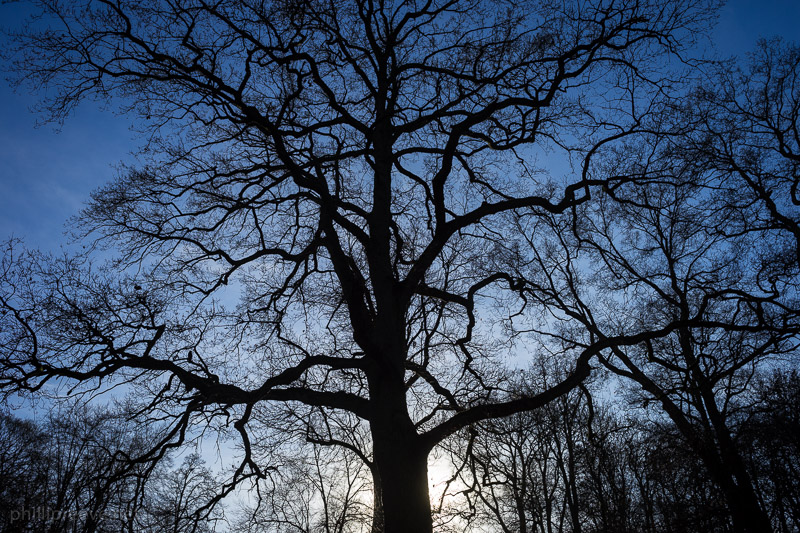
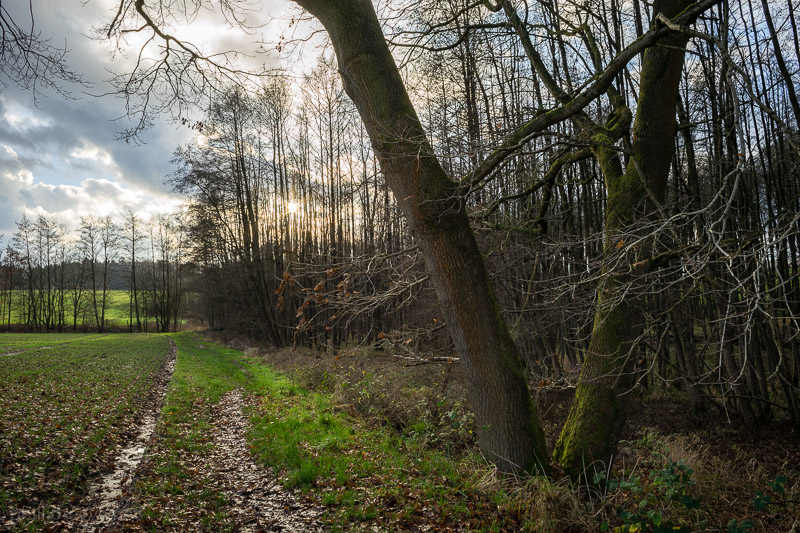
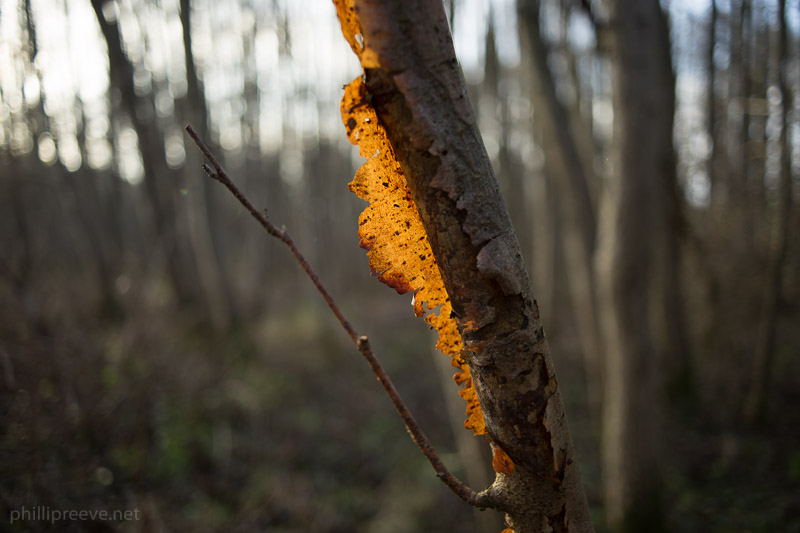
Other Articles
- My new Facebook page
- Manual lenses on the Sony a7 – a beginner’s guide
- 15 affordable manual lenses for the Sony a7 series
- My other reviews
This site contains affiliate links. If you make a purchase using any of the links marked as affiliate links, I may receive a small commission at no additional cost to you. This helps support the creation of future content.
Latest posts by Phillip Reeve (see all)
- Review: Samyang AF 75/1.8 FE - April 12, 2021
- The FE-List now has 113 lenses on it - March 25, 2021
- 2020 – Year’s end review - December 28, 2020
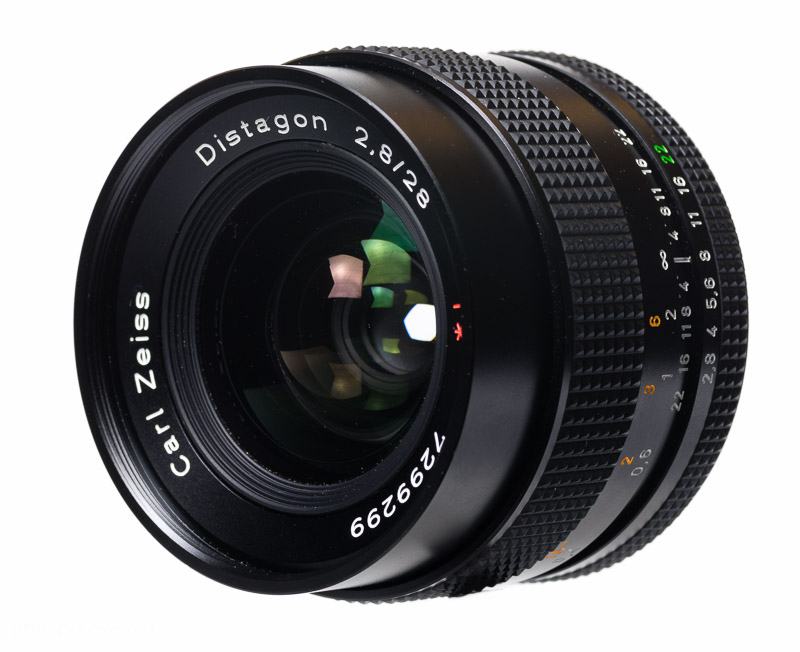
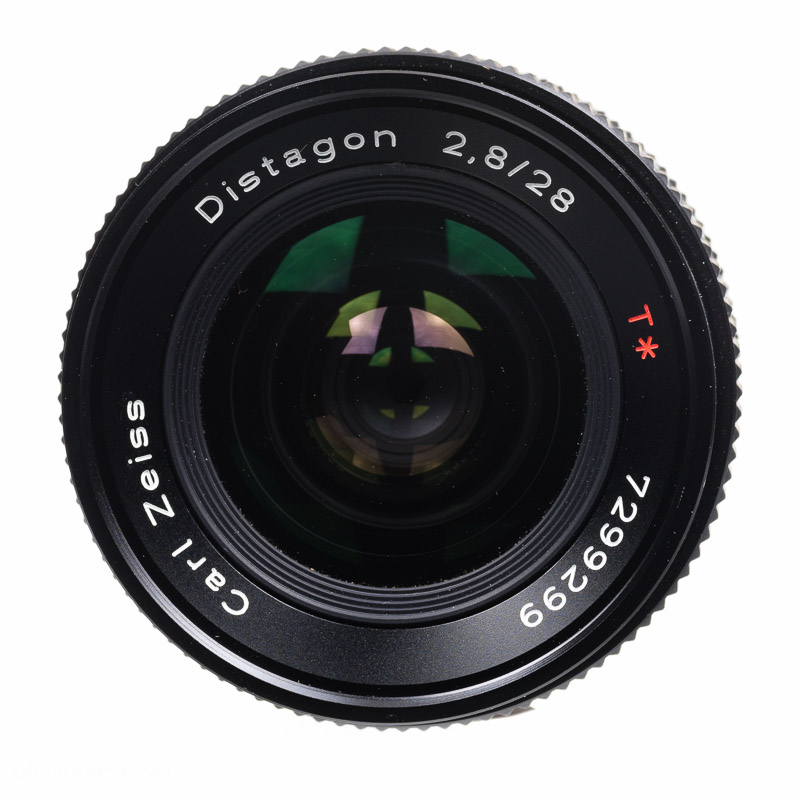
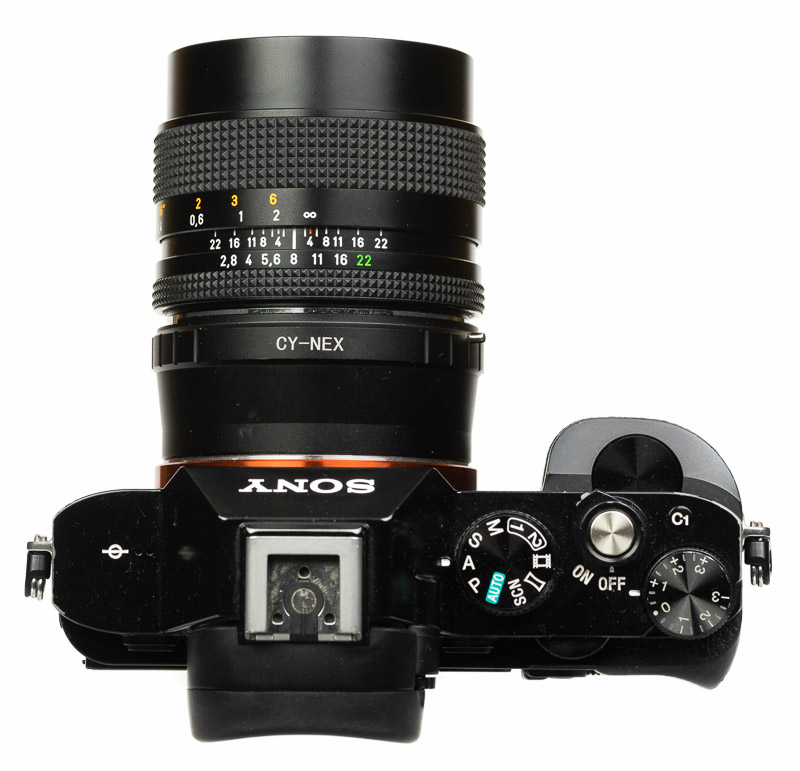
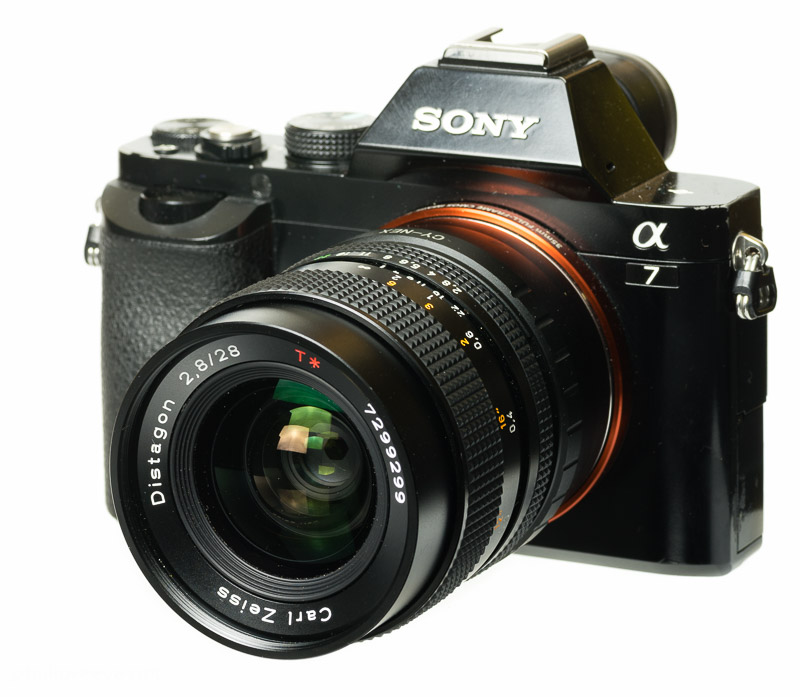
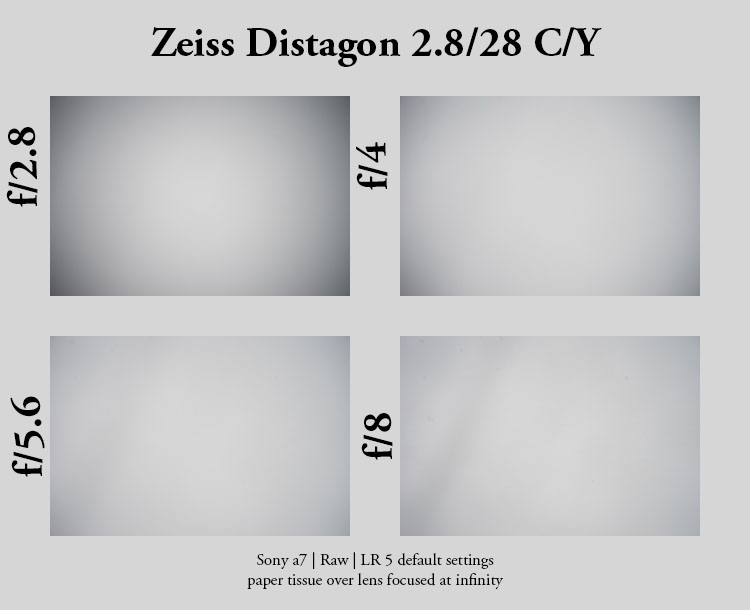
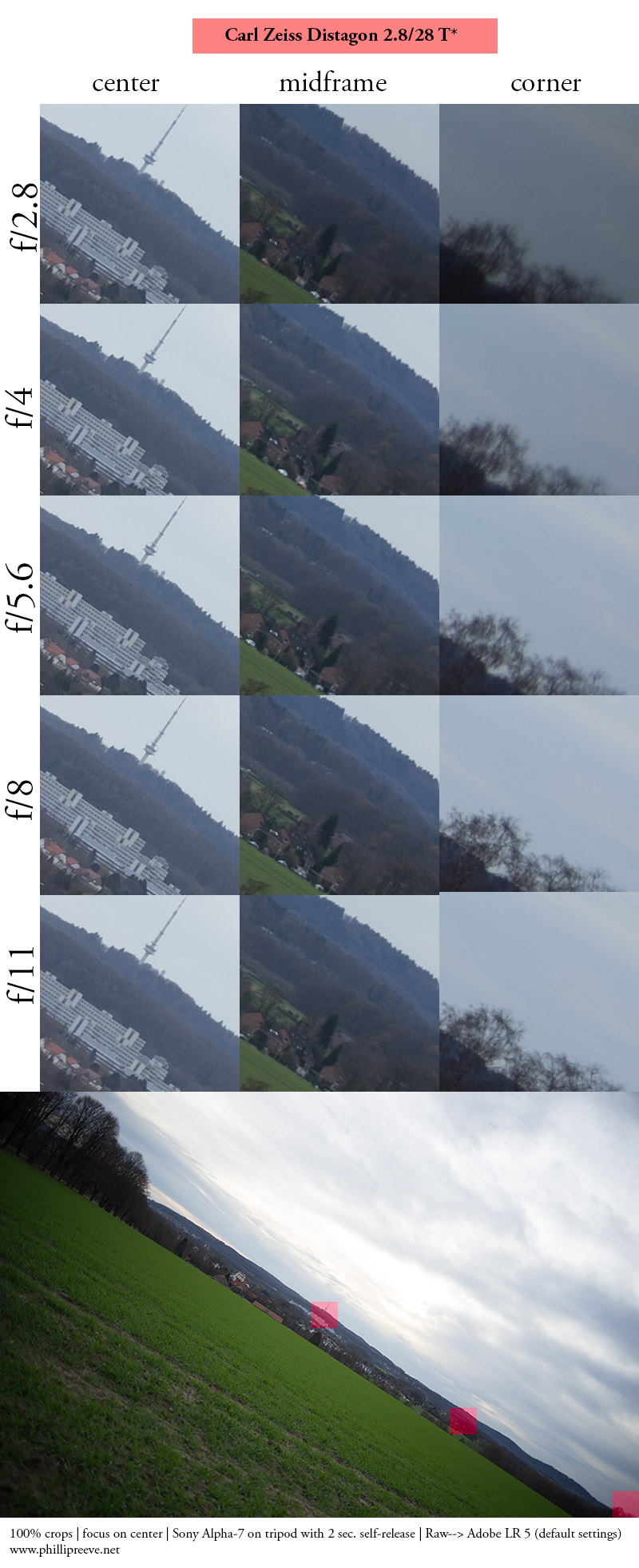
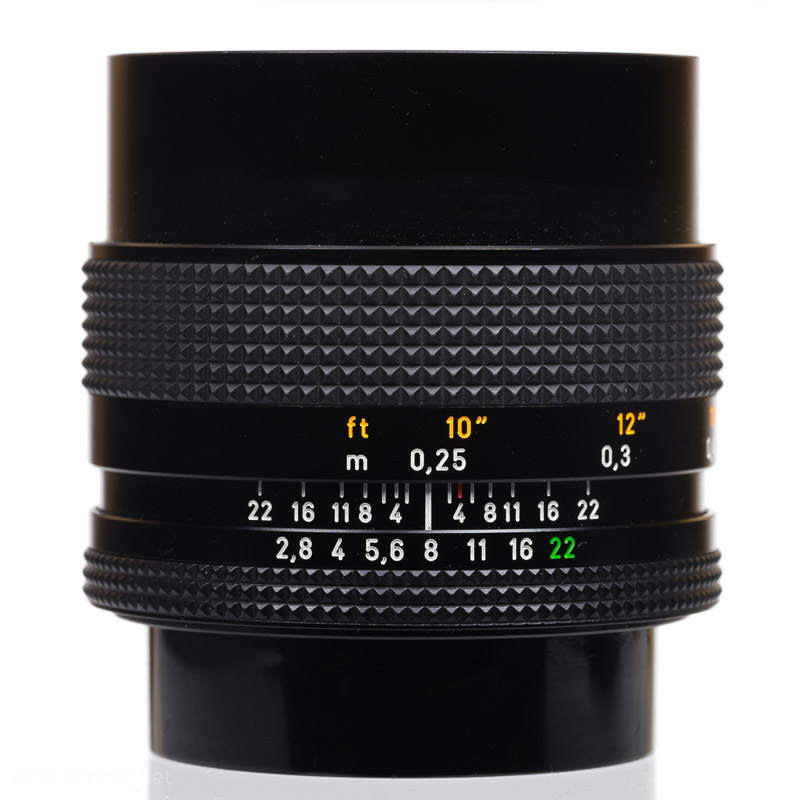
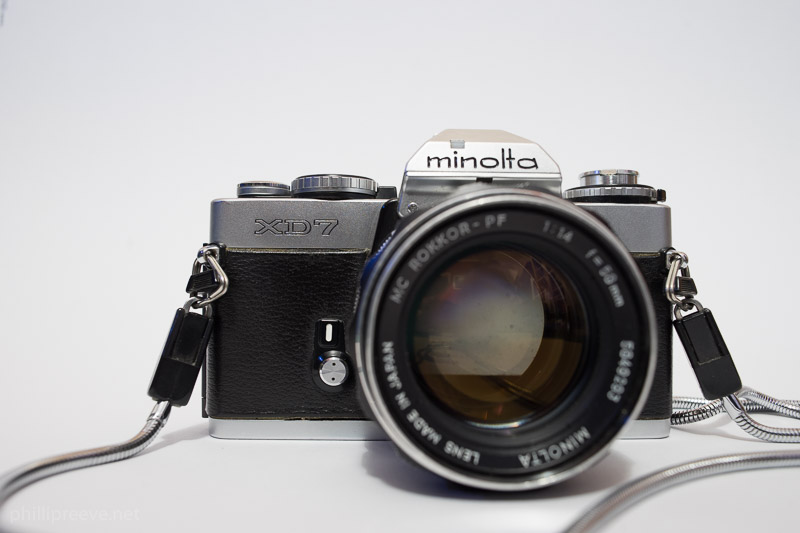
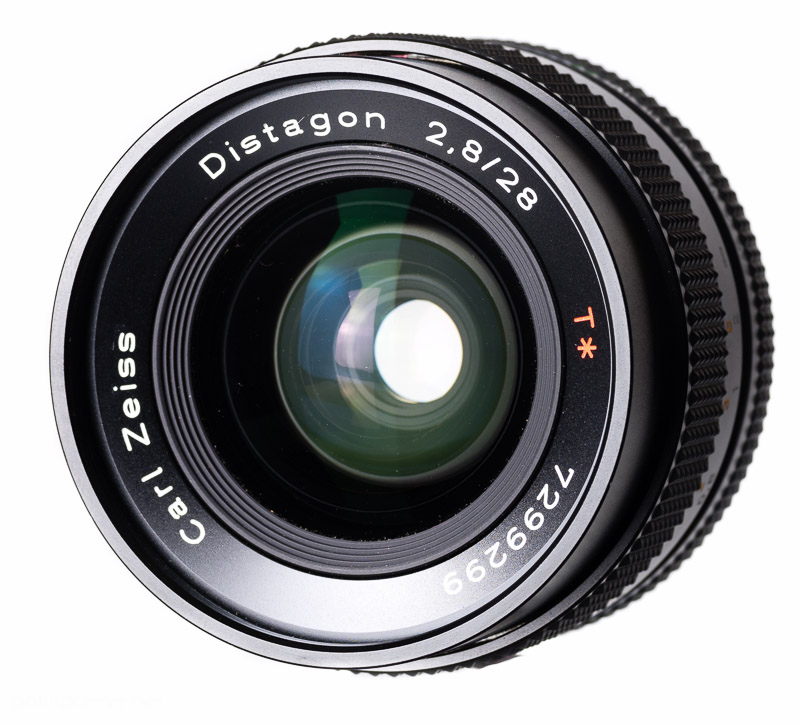
I wonder how the Zeiss 28/2 “Hollywood” stacks up against this 2.8 version. The Hollywood is said to be one of the most 3D-ish lenses.
Well, I have both and the “Hollywood” is definitely better at short distances with it’s floating focusing. Plus, it has much nicer bokeh.
OTOH it’s heavy and pricey, I enjoy taking the smaller Distagon with me for landscape.
In my observations, the Hollywood is at least one stop ahead of the 2.8/28 in terms of sharpness. I will review it somewhen in 2016 here.
Nice review. The bokeh in the last shot looks just like my Samyang 16/2’s near mfd on an APS-C sensor @ 2,8, it’s a little prettier at f/2.
Do you prefer this alot over your MDI or II (i.e not optically revised MDIII) Minolta 28/2? Different strokes for different applications, perhaps.
Random question, do you use a tripod to produce your sample images or are they hand held?
almost all of them are handheld. Only the sharpness shot was shot from a tripod
Lovely shots again Phillip! I bought Sony FE28 after reading your review, really loves it, very sharp and no flare at all even shoot directly into the sun.
Hi Phillip! Thank you for your reviews and the effort you put in them. Any chance of a batis 25mm or 85mm review? How is your a7 doing? Already sold your a7II?
Hmm not too soon I think. Both are great lenses but I find it hard to justify their price.
Hello,
thanks Phillip for this interesting review!
Can anybody provide a short comparison with the Minolta AF 28mm F2 A-mount lens?
Thanks and happy New Year to all of you!
Thanks. for this review.
I use a Pentax K 3.5 which is a very good lens with great homogeneity and virtually no AC . I like it very much.
I just bought a Rokkor MC 28mm 2.5 SI which has a good reputation . It is an older lens but I am amazed by the results. It has a yellow cast and a bad transmission . You loose about 1/2 or 3/4 of a stop . That said, it has nice coulours and contrast and produce a very good 3D effect. You should test this lens.
Hi, Philippe. Yes, I bought the ‘radioactive’ f.2.5 Minolta MC as well. Since my fairly recent acquisition of an A7 and its A5000 APS-C complement, I have attempted to expand my options with some short flange-back distance vintage SLR primes from Minolta, Konica, and Topcon with auction wins on eBay (I am in Ohio). Well, WHAT a disaster! I only bid for excellent-to-“like new” examples, qualified first by me via email, and ended up with a pile of around 20 lenses infected with fungus. Some literally stinking with mold! This group of manufacturers’ lenses have obviously been lying around neglected for quite a long time until they find their way into the hands of garage sale hounds and such… at least here in the U.S. Fair warning, then, to all readers of Phillip’s fine blog.
My research indicated that some of the Minoltas may be especially prone to this malady, and I have to concur from my experience. I have just about given up on the Minolta MC’s and MD’s in particular, sadly enough; I just don’t know how to avoid this sort of mess now. I have not had anything like this problem with my Pentax, Nikon, or Olympus acquisitions, with just a few exceptions; and even the ‘camera dealers’ on eBay are guilty of the same negligence. People must buy these infected lenses and not know the difference.
I really, really wanted the 135mm/f.3.5 MD (final version) and the 200mm/f.4.0 MD (last) for their strong performance and rendering characteristics at a dead minimum size and weight. But it appears that finding success will entail yet more grief. So, for now, I just have to pass; which greatly disappoints me. I hope circumstances are notably better where you are.
That’s sad to hear. I have had much more luck with my Minolta lenses, maybe 1 in 20 had fungus and unlike you I often bid on the more risky auctions.
I had very good luck with individual lenses purchases. ANYTHING in a bundle was a disaster if such mixed lenses and was not the previous owner of the lens.
Fully open, the 2,8/28mm Distagon is a little better as the 2/28mm “Holywood Version” , according to Zeiss expert statement. But after that, the 2/28mm Distagon version is the winner!
But I agree, in general, the C/Y 2,8/28mm T* Distagon is an excellent WA lens!
I recently bought the hollywood 28/2 and find the center at 2,8 better and over a wider range, compared to the older 28/2,8 version. From 4 the 28/2,8 wins in terms of wider field and in all cases the sides and corners are lousy on the hollywood, eve at f11.
The hollywood has a much different fieldcurcature and that is usefull at conditions where center is further and the closer sides of the field are of interest (for example three persons round a table, the middle further away), in that case you can make an excellent picture at f2,8 where everyone is sharp!
If you are interested I will mail pictures. Thanks for your reviews.
That agrees with what I have heard about the C/Y 2/28. There is a good chance that Jannik Peters will review the lens on this blog in the not too distant future.
From evaluations I have seen on the better manual focus lens forums, the Nikkor 28mm/f.2.0 AI, not mentioned here, seems to get the nod over the more widely celebrated (somewhat over-hyped?) 28mm/f.2.8 AI-S as something “special” when the topic of “best vintage manual focus lenses” comes up. I would infer that this is not all down to the faster lens’s higher reported resolution at longer focal distances. For close-ups, it should not be overlooked that the 28mm/f.2.0 also has CRC correction — but in this case, a rather uncommon front of lens correction group. I might infer that this feature would, in principle, give the lens a broader compatibility with modern sensors than many vintage lenses with a rear floating element.
The 28mm/f.2.0 AI also appears to be more “even handed” and straightforward in use than some of the lenses discussed here (e.g., with respect to field curvature issues). The MTF curve I have seen also exhibits no ‘dip’ at a middle radial distance from center which I often see in more modern lens designs (compare the Nikon AF-S G in-house ‘competition’).
So… I have patiently acquired each of these ’28’s’: Konica Hexanon AR 28mm/f.3.5 AE… SMC Pentax-“K” 28mm/f.3.5… Nikkor 28mm/f.2.0 AI… 25mm/f.2.8 Zeiss Distagon ZS (at 25.6 or 25.7mm actual FL, close enough)… and a so-far virtually unused Sony FE 28mm/2.0 auction pick-up bargain. Add a featherweight Minolta 28mm/f.2.8 MD (last version) as a cheap ($10) curiosity. The cameras are Sony A7, A5000, and Pentax K-3 II (noting especially the pixel shift capability here in addition to in-body stabilization). The Pentax, the Nikkor, and the Zeiss are compatible with both mount systems. A Leitaxed-to-K-mount 24mm/f.2.8 Olympus MC Zuiko and a Contax Vario-Sonnar 35-70mm/f.3.4 ‘flank’ the 28mm’s in FL. Priority to landscape/cityscape subjects, then.
Unfortunately, a lingering, but still “temporary” disability plus another complication or two have so far inhibited the initiation of any direct comparisons of my own; but I remain very engaged in my ambitions and plans, so I would appreciate reading anyone’s informed perspective comparing the fast Nikkor or any of the other lenses mentioned to some from the featured list above. Retired now to ‘artistic and creative pursuits’, my view is that having a choice of very good lenses with different rendering characteristics (maybe not SO many), particularly for landscape and nature subjects, is one practical way to ‘compete’ for “eye time”, effectively and artistically, in a media saturated world with folks carrying a load — and I mean a load! — of highly corrected f.1.4 contemporary wide angle primes or weighty/price-y Zeiss prime lenses of premium, recent design. Thanks for your consideration.
I look forward to that comparison! I hope you get well soon.
Personally I have very little experience with Nikon glass. It is usually a bit more expensive and I don’t like the reversed focusing direction which goes against my well trained muscle memory. But of course there are many very nice Nikon lenses.
just looked the Ai 2/28 up and it is on my “buy if there is a good occasion” list, thanks for the tip 🙂
I was very fortunate to acquire my 28mm/f.2.0 AI Nikkor the way I did. It was attached to a nearly pristine Nikon FE2 body on auction at eBay, and apparently no one but a single camera broker type and me… right before the closing action… noticed that it wasn’t the usual f.1.8 50mm! The seller had simply listed the combination as something like, “Nikon FE2 Camera and Lens”. So you can imagine the bargain I ended up with. The lens is exc.++, but it could use refreshed lubrication if I find I’m using it a lot.
Regarding the economic factors involved with buying older MF Nikkors, I have noticed a clear trend in the final auction prices for older manual focus lenses on U.S. eBay in the past two years or so. I am frankly a little shocked at how far some prices have continued to fall, particularly on wide-mid and telephoto zooms which were formerly, and not that long ago, held in pretty high regard — for example, the big and relatively fast Kiron/Vivitar Series 1’s or the nifty little 28-50mm/f.3.5 AI-S Nikkor for the former; and any number of MF telephoto zooms, including pretty nice Nikkor classics like the venerable 80-200mm/f.4.5 AI (the second, 12-element version) and the often overlooked 50-135mm/f.3.5, which is still very competitive today.
Well, quite a few newer and notably upgraded bargain lens options have appeared and gained a strong reputation in that time span; so taken with the declining sales figures for DSLRs and a fairly stagnant market for most mirrorless cameras (especially here in the U.S.), I guess the trend is understandable. As a prime lens-centric and deliberate, pre-visualizing landscape shooter myself, I have recently sprung for both the Canon 10-18mm IS STM and 55-250mm IS STM for use on my A7-complementing 9+ ounce A5000 body, along with the 40mm STM and a Kenko Pro 300 DGX 1.4x EF teleconverter. My prices via eBay, with patience, were all just silly cheap for 100% like new examples. The two zooms TOGETHER weigh less than 21.5 ounces (!) and fit comfortably enough into ordinary sport jacket side pockets. They are plastic, but solid and not “plastic-y”… and yes, they are image stabilized in-lens on an A5000/A6000 with a smart adapter.
There is just nothing else like this duo that I know of to complete a system for a budget conscious photographer with excellent 100mm macro, 135mm, and 200mm primes + top-of-line 1.4x TCs from “independents” Tamron & Kenko. The ‘killer app’ for the 55-250mm Canon, in my case, is its unique, apparently undiminished and diffraction limited performance wide open (f.5.6) at 250mm FL… in a 13.4 ounce (nominal) lens! See ‘photodo/e-photozine’ for a fast run-down. I have looked hard at the affordable-end 300mm MF prime lens options, and I remain unconvinced that any, also compatible with the Pentax flange-back distance — there will be a full-frame Pentax in April… not that I’ll be looking to buy one before 16-18 months has passed — …can appreciably beat the little Canon IS STM to get me into “wildlife” FL territory (as needed: APS-C 400-450mm FF-equivalent, using Canon’s 1.6x crop factor for the A5000). Consider your options in RAW, along with the stabilization factor, if you don’t have a Series II A7. How does a 3-1/2 decade old 300mm at 37 ounces+ compare for you with regard to your priority photographic subjects? This is my tip for your prime lens loving readers, Phillip. No bulky and popular 70-200mm AF zooms for me… except for my very cheap, very rugged and fast screw-focusing, circa 1990 SMC Pentax-F 70-210mm/f.4.5-5.6… for “sports”, *as needed*… or whatever. The excellent SMC-F 135mm/f.2.8 + Kenko DGX TC and an “as needed” SMC-F 35-70mm “explosively fast” focusing mid-short tele zoom on APS-C [so claimed, on a K3] serve those DSLR “action” photography needs with higher end rendering qualities at a low overall cost (though the 135mm is not so inexpensive to acquire, considering its vintage). The latter is an infrequent requirement for me, as I expect it is for many of your readers, so economy is important.
With that side note, I see one MF prime lens line showing some definite APPRECIATION in value (even as the prices for Contax-Zeiss and top-rated Minoltas fall), and that is the better and most practical multi-coated-“N”, AI and AI-S Nikkors! I am not entirely sure why. I’d take note of these among the ones that seem to be commanding better prices of late for clean examples on U.S. eBay — 35mm/f.2.0 AI-S (my own first film SLR “normal” lens), 85mm/f.1.8 pre-AI (esp. the multi-coated ones), 105mm/f.2.5 AI & AI-S, 135mm/f.2.8 AI-S, and 200mm/f.4.0 AI-S (n.b. what Japanese vendors are asking for the latter two on eBay these days). My point, of course, is that certain Nikkors can be both secure investments and cheaper in the long run. As someone with too many accumulated MF lenses that didn’t get sold off in timely fashion due to life’s little complications, I should know.
The 28mm/f.2.0 seems to be one Nikkor selling for some $50 less than it was two or three years back, however — good news for some , maybe — as is the 24mm/f.2.8 “N”, AI & AI-S (the last pre-AI version does have the ‘new’ CRC lens formula, BTW), which is reputed to be very sharp at landscape apertures, if perhaps less stellar at f.4-5.6 than some might hope. The 20mm Nikkors seem to be holding steady; and with the lack of affordable modern primes at this focal length, I believe the 20mm/f.2.8 AI & AI-S especially remain ‘thrift-conscious’ options for A7 series users, taking the long view and in the absence of cash flow inhibitions… if you can find a keen price on a very clean example. And I did so myself by following one of my favorite eBay lens shopping strategies — look for auctions closing on and around the big holidays. I don’t know what people are thinking, setting up their auctions to close around dinnertime on Christmas day… or in the evening on New Year’s eve. My own minty, one pro owner 20mm AI-S came to me about $130 below “market value”, my Christmas gift two seasons ago to myself! In a case like that, it’s really more like putting money into your bank account… at least for us so-called “retirement age” guys. Irrespective of forum food fights over which 20-21mm lens is “best”, the Nikkor in manual focus remains very much in demand; and supply of really clean examples for sale at a [potentially] decent price is limited.
Also, thanks for the sympathy regarding the fungus invasion, Phillip. I’m working through the process of recovering the money spent. To add a plus note, I was successful at acquiring really great examples of the two handy Minolta AF zooms on my A7/A5000 hot list — the 35-100mm/f.3.5-4.5 and the tiny, 13.3 ounce 100-200mm/f.4.5. For me, the two best of the Minolta bunch: the frequently praised 28-135mm being way too heavy and bulky (that is not a “convenience” lens, IMO); and the “beercan” tele being both too big AND effectively one stop slower (!), if the IQ comparisons by aperture on Kurt Munger’s website are representative, and IQ-first is your priority.
I cannot see why one wouldn’t want the 100-200mm as a Sony mirrorless owner. For Pete’s sake, the thing sells for around twenty bucks these days at auction here; and it’s a little jewel, made the way they used to make ’em, thus providing pride of ownership. It appears to be at optimum at f.5.6 across maybe 2/3 of the frame, losing a bit in the center for the sake of sharper edges at f.8 if you want that for certain landscapes; I’m guessing f.6.3 could just be a set-and-forget aperture, when you want to keep it dead simple in daylight conditions. All you really need is a “dumb” Minolta/Sony-A adapter for this lens if you’re happy with manual focus! What a bargain for around $30-38 all in! The original-owner seller of my lens carefully compared the example I bought (still virtually ‘mint’) to the new $1,000 Sony 24-240mm super zoom he bought to be his ‘one and only’ lens — at age 75, he was ready to relax and keep it truly simple — and reported in correspondence after the sale that the humble little Minolta frankly outclassed the latest in high end superzooms by some sort of noticeable margin over (most?) of its range. FWIW. He was very glad that his long treasured little gem would be going to a good home, even as it was, effectively, a giveaway.
So there’s my strategy for using zooms, writing as a prime lens and new A7 guy — they gotta be small; super lightweight; pretty sharp, even by prime lens standards, pretty much all across their range; cheap enough to be regarded exclusively as COMPLEMENTS to the primes… for when a zoom is best overall; or where it serves as a “just-in-case” back-up, allowing you to leave a heavier prime lens or two at home when you’re out and about. For events and social gatherings where I do not wish to look to some like a lens changing photo-geek… or in really inclement weather… I call an undervalued, compact 15-ounce Tamron SP 20-40mm/f.2.8-3.5 AF on an A7 in MF, accompanied by the skinny 35-100mm on an A5000 (or A6000) my “walkaround” zoom lens killer! With Pentax, I’d go 15-ounce Tamron 17-50mm/f.2.8 on K-S1 (sold in the U.S. recently with kit zoom for $179-199 net after rebate! — check the specs, folks), K-S2, or K3: and Canon EF-S on the A5000. Obviously, I am not putting emphasis on auto-focus speed across the board (as befits the philosophy of this site). As an old school film guy back in the day, I KNOW that carrying two bodies can just make more sense, much of the time, for mostly prime lens users — I never shot a single frame on a zoom lens in the film era. And today, the Sonys make that approach more convenient than ever, given creative use of the crop factor. O.K., maybe I was a “purist” about lenses back in the ’80’s’… but I didn’t need anything but primes then. Even after 22 years away from photography, it didn’t take me all that long to understand that digital photography is a very different game from the artistic standpoint as well. So now it’s “horses for courses”, as the Brits sometimes like to say.
I hope these observations will help some of your readers imagine the possibilities for fleshing out their own A7 series or Sony APS-C kit in a practical way. I appreciate your practical, relaxed and friendly blog so very much, Phillip, and I look forward with anticipation to each new installment. It has been a lot of fun getting back into the swing of things with this hobby (though I was pro back in the day); and as much as I take the creative and artistic side of photography seriously, I’m still a gearhead, I have to admit.
Thanks for your very extensive list of recommendations! The Nikon 4.5/80-200 (the one with the squared light baffle, right?) was already on my radar but I hadn’t heard about the other ones. Both the 28-50 and 50-135 could be quite handy.
I have next to no experience with Nikon lenses, there are far too many lenses to cover them all and I have to put my focus somewhere. I manage to review one or two lenses a month so I try to pick the ones where there are no quality reviews available and which I would like to use myself either because they have a very good price/performance ratio or because they stand out in another way and your Nikon recommendations might fit in both categories.
I tried two of the NAi 28/2 and they both had more “glow” than the OM 28/2 I tried them with, which was smaller and lighter, and IMO a better lens. However, I have even sold that now because of the “glow” and the better performance of the F/3.5 versions.
Yannik has recently bought a C/Y 2/28 and I look forward to his review of it, the infinity aperture series looks better than I would have expected. I was surprised to see that the Nikon regularly sells for less than 250€, that’s cheap enough to try one I think.
Wow, that’s still high by U.S. standards: I’d say $165-180, depending on your luck or patience, is realistic nowadays for that lens in clean condition on eBay. I would have said $225-230 a few years back. I see quite a few folks here with “foto” in their recent bid history ‘competing’ against me for lenses on eBay. Not rubbing in the low prices folks in the States often enjoy in comparison (but so typically don’t appreciate). We bunkered-in ultra-provincials have other problems, believe me!
Interesting. Thanks for the input, Tim. That 28mm/f.2.0 Olympus appears to enjoy a good reputation, though not many forum guys seem to own one. I’m surprised by your giving the nod to the f.3.5 version, I have to say. Usually the verdict is something like, “pretty decent and cheap… but not as good as the 24mm 2.8.”
One of my personal conjectures on this sort of thing is that I think there are many people who “see” the performance from vintage lenses that they think they are SUPPOSED to see… which is not necessarily the same thing as having a perception well correlated with the actual IQ quality latent in the file. I’m not speaking so much about people overvaluing a lens, as the opposite… with regard to their own possessions! I look at posts in Pentax Forums fairly often, and I consistently see comments such as, “I’m really pretty happy with this lens… Of course, it’s not as good as _________ [insert name of more expensive lens].” And often, I’m thinking something like, “Actually, my hunch is that the ‘cheap alternative’ is AT LEAST as good as a practical instrument, if not better!” Lenses with “plastic mounts” take the hit all the time. This is just stupid in the case of featherweight lenses, since most of the BIG buck lenses today have their metal BAYONETS screwed directly… into plastic! Roger C. had an eye-opening blog piece on this at lensrentals.com.
Folks are very conscious of not wanting to look somehow ‘stupid’ (by internet ranting standards) — newbies who don’t want to immodestly overstate their level of knowledge , most obviously; but not just them… not by a long shot. Group pressure is a powerful thing. The cognitive science literature is full of examples, and the data is quite consistent. A look at the list of human cognitive biases on Wikipedia is a very instructive exercise. It will take you awhile to run through the list!
It could be that the f.3.5 Olympus has simply failed, for less than good reason, to gain more traction as an internet “fav” to compete with the f.2.0 and other “higher end” models, perhaps due to it being recommended as a ‘cheap’ alternative: ‘beginning lens-adapting hobbyists take note if you want to save a buck.’ Maybe a case of inadvertent misdirection? I admit, I had passed that one over in my mind, and now my interest is piqued. Maybe you’ve started a new trend here, Tim! Olympus attracts me as a Pentax user because of their adaptability to K-mount without an intervening (and somewhat problematical?) 3rd party adapter.
Thanks Fred, it was a similar situation with the OM 21/2 and the OM 21/3.5. I ended up keeping the F/3.5 for preference. Perhaps if I’d needed it more for close use, the F/2 version with its floating elements would have been better, but in every other respect, I preferred the results from the smaller version. However, copy variation will have effect too, different copies of both may give a different result. Only those with the ability to test many copies of the same lens, (like Roger Cicala) can be definitive about these things.
Thanks for your reply, Tim. How did you arrive at the Olympus 21mm/f.3.5, then? I infer from forum chat at Fred Miranda and MF Lenses that this one might well be deemed ‘most recommended vintage 20-21’, assuming we’re not talking about taking on the burdens of bulk and cost associated with the Distagon 21mm or the $-factor associated with the R-Leica 19mm, Series 2. In addition to the new Canon 10-18mm 1.5x crop option I highlighted above (actually two, from which to cherry pick… per your observation!), I currently have the 20mm/f.2.8 AI-S Nikkor and a Chinon-Tomioka 21mm/f.3.5 in M42 mount. At the time I acquired those, my main focus was on trying to find something, anything (!) noticeably better than the consumer zoom option to fill the FL gap in APS-C K-mount (or otherwise) between the 15mm and 31mm Limiteds, for my landscapes and other critical work. What a bleak wasteland that 28-35mm FF-equivalent range for crop sensor DSLR has been for practical, edge-to-edge sharp, modern rendering prime lens options at a good price! I pulled my hair out for three years fretting about that one. Picking up the Sony A7 finally brought me peace, less for getting to full frame than for giving me quality prime lens options for landscape work and such at the effective focal lengths I wanted.
Now the question has changed a bit… to what is my best option at around 20mm full frame? The Nikkor’s strengths and weaknesses are pretty well known by now, but I might expect it to perform more like a modern lens on crop sensor, as I originally intended. The Tomioka I expect to be “characterful”, but nicely nuanced, but again, trusting vintage ultra-wides that old at the borders, full frame, for landscape is something else again. Someone with a little ‘cred’, I think, pointed out at FM that his modern Fuji 21mm on a 16mp X-Trans crop sensor easily beat every vintage “20” he had tried full frame. So he says, and FWIW, of course… but food for thought, definitely.
I might wonder if that Canon EF-S, operating in the middle of its range, shooting RAW, and handled optimally could be hard to beat in a meaningful way with a vintage “20” on the A7. I think quite a lot of that 20.1 Sony Exmor sensor on the A5000, BTW. I can only speak from examining photos online as yet, but my feeling right now is that operated at base ISO, or a notch or two down, the humbler A5000 betters the A6000’s rendering overall, being noticeably better defined in tonal shadings, microcontrast, 3D effect, color “separation”, and subjective dynamic range. Much the same could be said vs. the Pentax k3, though the Pentax, to my eye, clearly outperforms the 24mp A6000 by a small margin. Yes, you can perceive the 4mp difference on the Comparator at Imaging Resource; but comparing the A5000, A5100/A6000, K3, and the 20.1mp K-S2/K-S1 Pentax on “House Poster” and the mannequins, especially, I think the particular and outstanding virtues of that underappreciated 20.1 Exmor are quite evident, on BOTH the Sony and the two Pentax siblings. Only later, I found out that the lab rats at DxO seem to agree with me, rating the A5000 one full “perceptual megapixel” superior to the A5100/A6000 across the board with EVERY lens I inserted for comparison — even by two p-mp, in one or two cases! Plus, the A5000 showed nearly 1/3 stop less vignetting, every time, AND about 1/2 stop better dynamic range at base ISO. I have yet to see someone else pick up on this in some comments section or forum, except for one fellow on YouTube with a series dedicated to the K-S1… though, admittedly, I have not been trawling the Sony fan threads looking for that comparison. Therefore, given that the Canon zoom is stabilized on Sony with smart adapter… and optimally situated wide open to one stop down for landscape work, I have to think that this combo has some real shot to be about as competitive as anything else which makes practical sense, until I’m proven wrong by test… or until future options present themselves.
Flash! The new Sony A6300 has been announced [“A6000 replacement”, Sony says], which I expect will resolve most any auto-focus issues with adapted Canon lenses for those of us who value accuracy over raw speed! Now the bad news — they now want $1000 for the still-24mp/APS-C body! And, no image 9stabilization added to justify the premium. Darn, darn, darn… And have you seen the prices on those new G Master lenses, Tim and Phillip?! “Greed Master” lenses? Just kidding, but holy smokes!
Thus, I am really on the fence as to whether to go after that Olympus 21mm now while I’m laid up and chomping at the bit, if I see a really great opportunity; or to just cool it for awhile. It is a great choice size-wise for the A7, plainly. Among the deliberators at FM, ‘J. Caldwell’, I believe it was — a VERY involved veteran contributor there — showed a long list of competitive vintage options he’d tested, including the Olympus, and concluded that the older SMC Pentax-“K” 20mm/f.4.0 was “best” overall (and better than subsequent Pentax models). Now there’s a tough one to find at a sane price! Beyond this, I’m really out of ideas myself, except for the upmarket, heavily-vignetting Canon 16-35mm/f.4 L on a future, more affordable A7 series Sony with an auto-focus friendly hybrid FF BSI sensor. Too soon to go that route, under present circumstances, I think: prices will drop and my EF-S alternative won’t likely start depreciating much, given the prices I paid.
What are your thoughts, Tim, and what did you compare the Olympus pair to? I’m also curious as to your take on the 24mm/f.2.8 MC Zuiko, which I picked up to save my having to carry the 17-ounce Distagon 25mm everywhere. THANKS!
Excellent review. For manual lenses at the 28mm focal length. I have 2 that cover all bases. The Contax Zeiss 28mm 2.8 for medium to long range photography. And the Nikon 28mm 2.8 AIS for short range. With these 2 outstanding lenses, I’m set forever!
Very interesting and informative review. As a long time user of Contax Zeiss lenses on my beloved Contax cameras, but finally getting around to adapting these for a DSLR I’ve yet to buy, am excited about using my “old friends” again. For many years I publicly displayed my 35 mm images often enlarged to 16×20 or larger, using my 28 2.8 and several other Zeiss lenses. People often thought I was shooting with medium format equipment.
The 28mm 2.8 was always a standout in my kit.
Hi Phillip,
thank you for this informative review! I own the Distagon 2.8/28 and I am very happy with it. I love the look and feel of the old contax-mount lenses. Photography like in the old days.
Any chance you will review the Zeiss Distagon 2.8/25 soon? I heard fairly contradictory opionions about this lens. The Distagon 2/25 ZF.2 must be a stunner, not only regarding the image qualitiy but also regarding the price. I would love to hear your opinion on the Distagon 2.8/25.
Cheers
Thorsten
it has a reputation for being a little less sharp than the 2.8/28 with lot’s of field curvature. It’s most interesting feature is the very close short focusing distance. I have no personal experience with it though an I don#t see me buying one too soon.
just in case: i could borrow you mine and a 4/18 Distagon
Thanks for the offer but I have too many lenses and too little time at the moment 🙂
Thank you , Phillip, for a great revue,
I will buy one.
Great revue. Sadly it looks as if this lens is much more expensive in a K mount
Try this lens in k-mount:
Excellent review, Phillip. I have the AEG version of this lens which I use on a c/y slr. I was wondering if you could recommend a c/y to e-mount adapter?? I also have an apsc Sony and I’d like to use it there too, but really want to make sure I retain infinity range.
I am happy with my K&F adapter: http://amzn.to/2m35D0U
Sadly, Zeiss does not service Contax MMs anymore.
How this Contax 28mm f2.8 compares with the Classic line Zeiss manufacture nowadays? A similar objective can be for example the 28mm f2 or the 25mm f2.8 both in classic flavour. This is available for nikon mount which has a dial for the aperture. Thank you in advance. Regards, Jorge
I haven’t used those and I wouldn’t want to speculate here
I haven’t tried the classic 25 2.8 though it’s reputation is not great.
I have recently acquired the 2/28 though, and that is an amazing lens if you tame the considerable field curvature at closer distances. It has much higher contrast than the older “Hollywood” Contax version, and is superb stopped down and can be very interesting wide open (it’s pretty sharp anywhere on it’s surface of focus. But that surface is not a plane, so focus and recompose won’t work). Slight tendency to mild soap bubble bokeh wide open at certain distances and certain backgrounds, but goes away one stop down.
I am thinking to acquire Carl Zeiss f. Contax RTS 2,8/28mm Distagon T* . My camera is Sony A7RII. Do you think this lens to be suitable for my camera? My current lens is Leica Elmarite-M 2.8/28mm. The result photos show sharp centre but burst off centre towards corners. I feel disappointed. I used A7II all the time with Elmarite-M 2.8/28mm and was pleased with the result. It should relate to resolution of the sensors. So, my question is if Carl Zeiss 2,8/28mm Distagon T* handles 42mp sensor? Thanks.
I am a bit surprised that you were happy with the Elmarit on the a7ii since it uses more or less the same filter stack as the a7rii which is known to cause issues with rangefinder lenses.
The Distagon has issues in the extreme corners as mentioned in this review but apart from that it should work very well on the a7rii as well.
I don’t understand very well this review. Vignetting and sharpness on the edges and the corners seem to be terrible. But your photos are amazingly good, and you strongly recommend this lens.
Is the quality of the photos (I am not speaking about the composition, of course) due to some esoteric quality of the lens, or heavy post-processing? How does this lens compare to other brands? I am going from disappointment to disappointment with 28mm lenses, except for a rare and wonderful Pentax 28/2.0 A and an expensive and heavy Leica R 28/2.8.
Both vignetting and extreme corner sharpness are not too serious issues for the landscape images I would typically take with this lens.
We have a review of the Zeiss 2/28 of which the Pentax 2/28 is a rebrand with the same optics. Maybe this will clarify things for you.
I have a whole line of AE-Zeiss only lenses from 18 to 200mm incl. PC-Distagon 35/2.8. During my C/Y-EOS-adapter tests( a lot of crap all around the world) i encountered strange Not-sharp at infinity behaviour of some Zeiss. could be the adapters but also some lenses. Since i dont have the Novoflex-adapter which has a real lens-locker lever instead of blade-system only it may be the best adapter but what if lenses are badly adjusted? infinity not sharp. I have found the best adapter in this case and it also has most perfect design to hold the lens tight enough(almost no wobbling). in the peeble-link this is described. Best Adapter with past infinity is: K+F Concept by Keithfaith. regarding chipped i have found out: the special eTTL-dandelion chip need the L-Steel(the plastic socket between adapter and chip) to be altered by 0.3mm otherwise no contact. Forget optixpcb-High Precision( a joke). its a altered OEM cheap adapter which is wobbling losing contact then. programming is similarly easy like the special dandelion which can be bought directly from bielarus exporter(forgot his name but he is the expert and can attach chips) he is also selling incl. template(if one will buy 5 pcs at once….).
regarding deadjusted lenses: my Sigma 28/1.8 Asperical Highspeed Wide is a good performer on APS-C regarding sharpness in the corners. an CA is very little at F 1.8. But it must be recalibrated.
The unsharp center zone of yours is only deadjusted infinity.
with K+F Concept past infinity adapter i can overcome this problem on EOS- DSRL. I will then adjust by shimming to get straight infinity. some of the newer MM-lenses are better Zeiss told, must dig out the informations. their real performance should be tested in Contax RTS III(vacuum back) or on optical bench.
Zeiss since 1978 after switching from bad-lens Olympus OM-system(1972-78).
Maybe i will get some MM getting F-adapter to have EOS-adapting option also.
I bought this lens based on your review, I bought an c/y to EOS adapter to put on a Canon EOS film camera & there was exteme vignetting at all apertures. I really want to like the lens but there is a huge circle on every image, it’s like looking through a telescope. Did I get a bad copy?
that is nothing that should be caused by copy variation. Maybe it is the adapter? Are any filters on the lens?
“…but a collector who looked really hard for a made in Germany copy and compiled dozens and dozens of serial numbers couldn’t find one.”. Sure, because none of 2,8/28mm were made in Germany.
FYI, “AE” stand for “Aperture-priority Exposure”. “MM” stand for “multi-mode” and these lenses were produced that had an additional linkage to the camera body to allow both shutter-priority mode + AE mode.
Hi Philip!
Really informative post and it’s been helping me out a lot with deciding what lens to get. My question is how does the 3d pop/subject isolation compare to the 28mm F2 zeiss version?
I wonder if you could share your thoughts about whether the floating lens element in the F2.0- is that alone enough to justify the extra price? Does the quality and character feel that much more different than the 2.8? I’m on the fence about getting the more modern ZF F2.0, or just getting the c/y mounted F2.8.
Based on your two reviews it seems that the differences seem minimal, with the exception that the 2.0 has a bit better short focus.
I plan on using this for film as well so a good manual focus operation is key. For reference I plan on using this with my Fuji Xh1
Thanks!
A
Which 28mm f2 Zeiss? C/y or Zeiss Classic ZE/ZF?